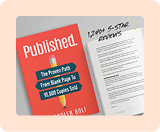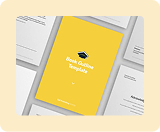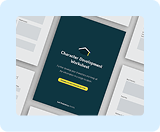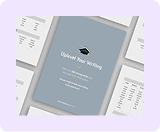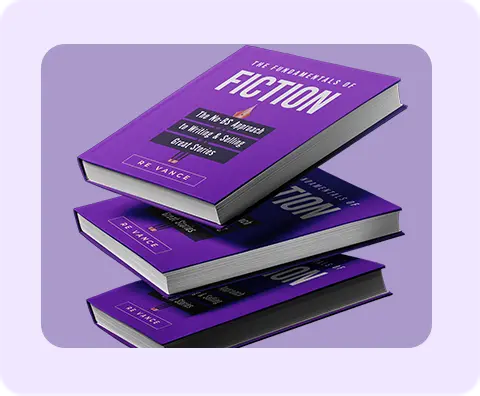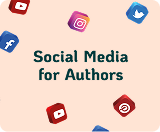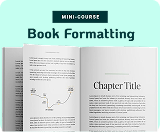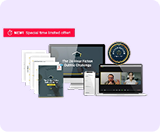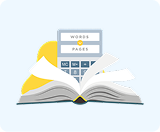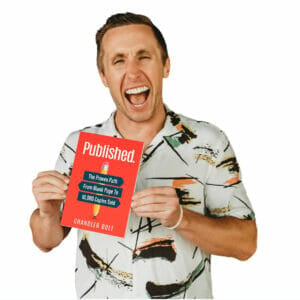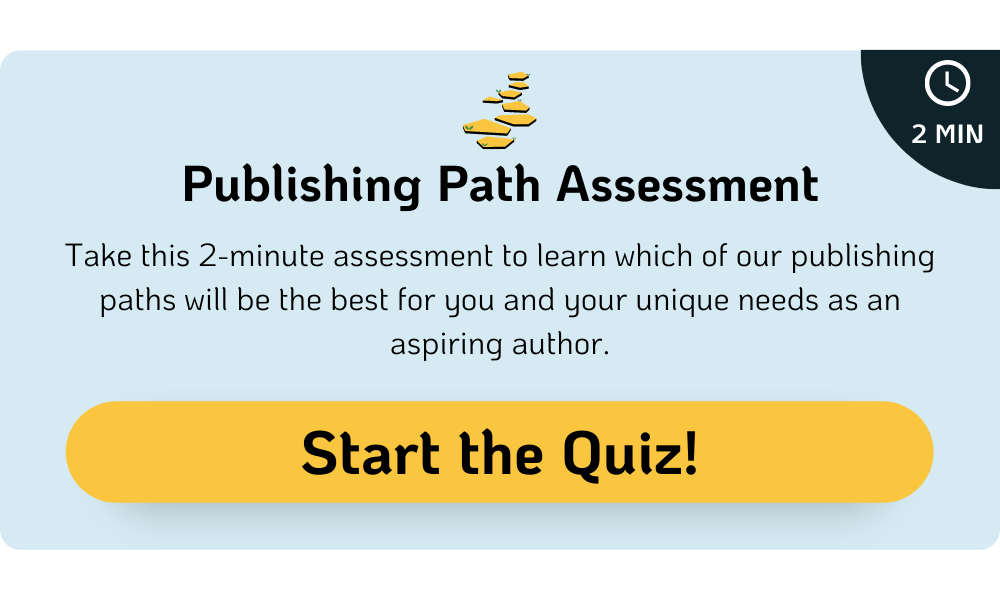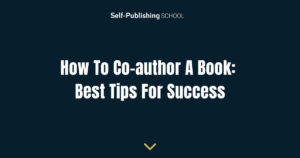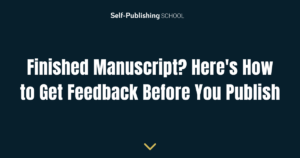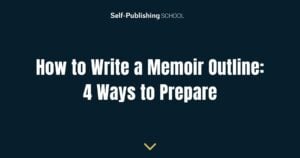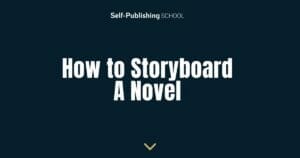I still remember the moment I decided to write a book. I was excited, inspired… and completely overwhelmed. Where do I even begin? What if I’m not good enough? How do real authors go from idea to published book?
If you’re asking yourself those same questions, you’re not alone. Learning how to write a book might seem like a huge undertaking (and it is), but with the right steps and mindset, it’s absolutely achievable.
If I can write a book, anyone can. I was never a star English student. I literally wouldn’t even call myself a writer, but I was able to publish a bestseller on the first try. And now I want to teach you how to do the same!
Learning how to write a book successfully is so much more than just writing and pushing a button to publish on Amazon. There are so many mistakes you can make, and I don’t want you to make them.
That’s why in this post, I’ll show you exactly how to write a book in a few simple steps, following the proven process we’ve used to guide over 8,000 authors to success.
Whether you’ve got a rough idea scribbled on a napkin or you’ve been dreaming about your book for years, this guide will walk you through the entire process through what we call the M.O.R.E Method: from brainstorming and outlining to writing, editing, and publishing. Let’s break it down together, one step at a time.
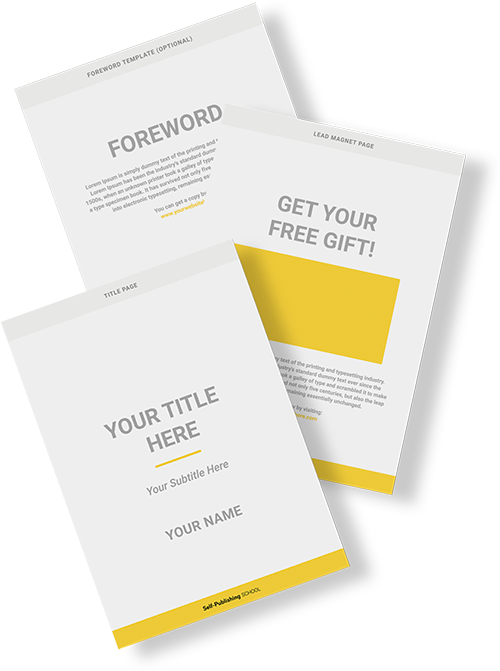
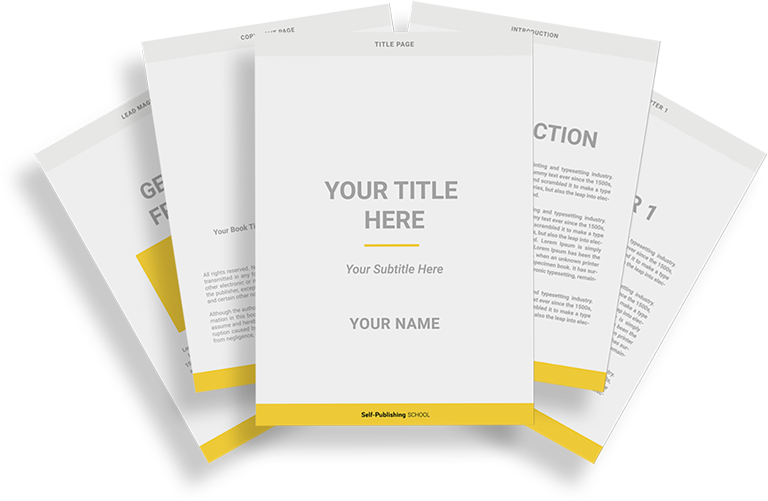
Book Outline Generator
Choose your Fiction or Nonfiction book type below to get your free chapter by chapter outline!
Book Outline Generator
Enter your details below and get your pre-formatted outline in your inbox and start writing today!
CONGRATULATIONS
Thanks for submitting! Check your email for your book outline template.
In the meantime, check out our Book Outline Challenge.
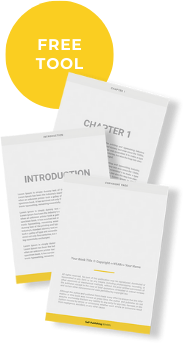
The problem: that dreaded blank page
You want to know how to write a book, and you feel you have a general idea of how to write a book, but when you sit down, you see a blank page. For debut authors and established authors, that dreaded blank page can make them wonder if they really do know how to write a book.
In fact, often, learning how to write a book can feel like one step forward and two steps back. You may feel like you can’t beat writers block and procrastination.
The good news is, you can and I’m here to help you learn how to write a book successfully. Let me show you what to do instead of staring at that dreaded blank page.
How to write a book in 10 simple steps
If you need help writing a book, these 10 steps will walk you painlessly through the process:
Step 1: Start with why
Simon Sinek is famous for his TED talk and book, Start With Why. To start writing a book, you need to know why you want to learn how to write a book. Like Stephen Covey says, “Begin with the end in mind.”
Let’s quickly cover the four reasons why you want to write and publish a book:
- Passion project (think raising money for a charity, leaving a legacy for the grandkids, etc.)
- Shared experience (think weight loss, battling cancer, overcoming childhood trauma, dealing with divorce, et.)
- Full-time author (think writing a series and living from your royalties, becoming a full-time writer / speaker / consultant, supplementing royalties with freelance work, etc.)
- Business growth (think getting more leads, referrals, and sales for your practice)
When considering how to write a book and why, most people find they fit in a couple of these buckets. That’s totally fine. Connecting with your why will set you up for long-term success. So, get clear on your writing goals: what you want the book to do for you; then, get clear on what you want the book to do for your readers.
I believe that, “Books change lives.” Books change the lives of the authors, the lives of the readers, and the lives of those who cheer you on and watch the process unfold. I call this concept Leveraged Impact. Now you know why you’re writing your book, you’re ready for the M.O.R.E. Writing Method.
Step 2: Mind map
Mind map is the “M” in the M.O.R.E. Writing Method. I’ve run workshops and spoken at conferences all across the country, and let me tell you, the idea I’m about to share with you blows people’s minds.
It’s nothing new, but it’s insanely powerful in helping people learn how to write a book. Ready?
Pull out a blank piece of paper and draw a circle in the middle of it, with some lines sticking out. Now, write your book idea in the circle. Set a timer for fifteen minutes and start working on filling in your mind map. You can also use a system like the story circle to give you new ideas if you get stuck.
If you’re having trouble, here are some questions to get you started:
- What are the main concepts you want to get across?
- What stories do you have that relate to this?
- What real-life experiences can you share?
- What are the broken record conversations you’ve had over and over on this topic?
- What are other books you’ve read related to this topic?
Here’s a mind map example for a simple cookbook:
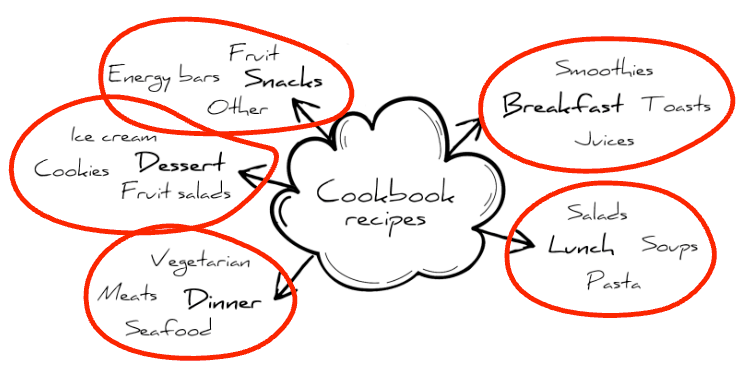
When I let people create a mind map for five minutes in a workshop, they are blown away at how many ideas they have. When you’ve done this for fifteen minutes at home, I’m sure you’ll experience the same, “Wow! I have so many ideas!” feeling.
If you’re feeling overwhelmed at how many ideas you have, or wondering how this applies to writing a novel, check out the FAQ at the end of this article. Now, it’s time to bring order to the mind map.
Step 3: Outline


Book Outline Generator
Choose your Fiction or Nonfiction book type below to get your free chapter by chapter outline!
Book Outline Generator
Enter your details below and get your pre-formatted outline in your inbox and start writing today!
CONGRATULATIONS
Thanks for submitting! Check your email for your book outline template.
In the meantime, check out our Book Outline Challenge.

Outline is the “O” in the M.O.R.E. Writing Method. So you’ve created a scrambled mess of a mind map and now you need to bring order to it by creating a book outline. Here’s the easiest way to think about it.
You have three groups of content:
- The main message of your book or guiding idea
- A few sections which will become your chapters
- Supporting content or supplemental stories and examples
When you look at your mind map, you’ll likely start to see some themes emerge. This is a big step in learning how to write a book. You’ll be able to group certain bubbles of the mind map into sections or buckets. Continuing with the cookbook example, here is the outline:

Those sections or buckets will become chapters in your book. Then, the supplemental ideas, stories, or examples will go in each of those chapters as subheadings. Book outlines create structure, order, and a map of where you’re going with your book. Now that you’re done with the “pre-writing,” it’s time to start fleshing out that outline and writing your rough draft.
Step 4: Rough draft
Rough Draft is the “R” in the M.O.R.E. Writing Method. When you start working on your rough draft, you need to have answers to these three questions.
- How long should my book be?
- Each genre has pretty standard word count expectations. Do your best to fit them.
- Each genre has pretty standard word count expectations. Do your best to fit them.
- Who is my ideal reader?
- Determine your target audience by answering the 4Ps: person, pain, promise, price. )These 4Ps are explored in more in-depth in my book, Published.: The Proven Path From Blank Page To 10,000 Copies Sold.)
- Determine your target audience by answering the 4Ps: person, pain, promise, price. )These 4Ps are explored in more in-depth in my book, Published.: The Proven Path From Blank Page To 10,000 Copies Sold.)
- How to start my rough draft?
- Learning how to write a book includes working backward from your target word count to create your rough draft. Set a target for how many days you’ll write, how many words you’ll write, and how long you’ll write. This will give you a target date for finishing the rough draft. If you miss a day, don’t worry. Get back on track tomorrow.
Tips to finishing your rough draft
After working with thousands of authors, I can already tell you one of your biggest challenges in this entire process of writing a book is going to be this: finding the time to write.
You’re busy. I’m busy. We’re all busy. But there’s never a convenient time for writing a book. There will always be excuses if you let there be excuses.
The number one tip I give people is to wake up earlier. If you wake up at 6:30am currently, wake up at 5:30am and give yourself an hour to get some words on a page.
Or, use your lunch break to write the book. Or, put it in your calendar that every Sunday afternoon from 1pm-4pm is your writing time, and show up.
Whatever you choose, make sure you stick to it. Persistence is the name of the game when it comes to getting your draft finished. Another tip is to set up a good writing space. Make it a place you want to go to every day to write the book. Block out distractions and write, write, write.
Remember, done is better than perfect. This is called a rough draft for a reason. Don’t edit while you write. The editing comes later. PS: I cover more tips on writing the rough draft in the FAQs at the bottom of the article.
Step 5: Self-editing
Editing is the “E” in the M.O.R.E. Writing Method. You’ll need two different types of editing as you learn how to write a book that’s polished.
First, you need self-editing. The problem for many writers is they want their first draft to be their final draft. But any experienced writer knows that the words never come out perfect the first time.
When you look at your rough draft, you’ll likely feel embarrassed at just how bad it is. That’s normal. Strap on your mental toughness helmet and just get to work.
But get over it and start working on the basic self-edits. As you read through your first rough draft, you’ll likely see a bunch of problems. You need to move this paragraph to the end, move that other one up, clean up the grammar, fix some punctuation, and more.
Some of the best writers in the world say it takes a minimum of three drafts before they have the manuscript in a decent enough working order to give it to an editor.
So do your self-edits, but don’t get stuck in it (here are some self-editing tips we recommend. You can also reference this bestselling author’s tips as well). Then, send it to your professional editor.
Step 6: Professional editing
Now that you’ve finished a verbal read-through and self-edit, it is time for you to give the manuscript to a professional editor.
There are a variety of types of editing:
- Structural / developmental editing
- Copy editing
- Line editing
- Proofreading
How much editing do you need? How do you find the best editor for your book? And how long does it take to edit a book? It really depends on how much work you did in the self-edit, how experienced you are as a writer, and how much you’re willing to pay for editing.
Of course, we can talk through this with you and help you make the best decision for yourself and the book. At this stage, it may also make sense to incorporate sensitivity readers or alpha readers.
Step 7: Cover design
Please, please, please do NOT try to create your own book cover! There’s a 99% chance you are not a professional graphic designer or book cover artist. And even if you are, you’re too close to your own work.
Hire a professional cover designer or use our self-publishing services to get your cover designed. When we design the cover for you, we use our internal team of professional cover designers.
We will give you, the author, these ten points to consider/collaborate with us on:
- Book title / subtitle
- Book genre
- Trim size / dimensions
- Page count and/or word count
- URL links to three bestselling covers that you like in a similar genre
- Are there any important themes, symbols, settings, objects and/or events in your book? Tell us about them.
- Back cover blurb
- Author bio
- ISBN
- Additional info
This allows us to make sure the cover designer and the author are on the same page for the vision of the cover. How to write a book doesn’t end with the draft, after all!
Your job as the author is to give the cover designer quick guidance on what your vision is, then get out of the way and let them do what they do best.
A brief note on book titles: When you title your book you want to be clear, not clever. You want the reader to instantly know what your book is about and what they will gain from reading it.
Also, remember a best-looking cover is not the same as a bestselling cover. Here are tips I give every author to make sure their cover is C.L.E.A.R. and readers G.E.T. it!
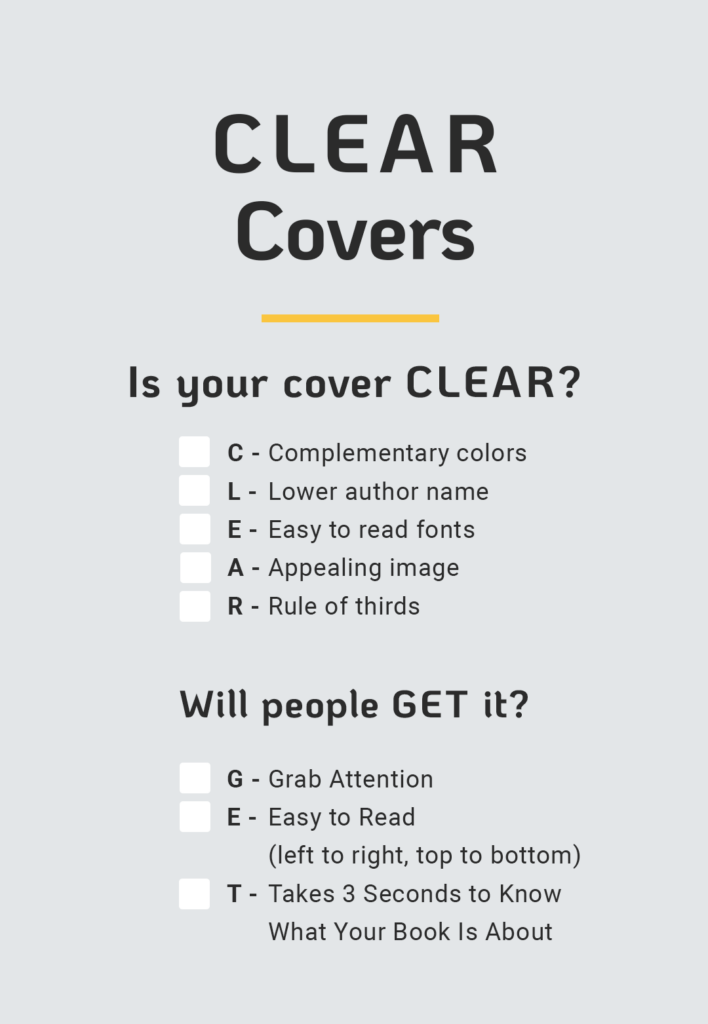
Step 8: Formatting
There’s a lot of confusion about how to format a book. I won’t dive into all the specifics of formatting here, since I linked up the article above, but I will tell you this…
Just like you want a professionally designed cover for your book, you also want the interior design of your book to look professional. The inside of your book is where most readers will be spending their time (duh!).
You want to make sure it’s beautifully designed and easy to navigate in every format: eBook, paperback, hardback, and audiobook. For more advanced formatting questions, see the FAQ at the end of this article.
Step 9: Launch
In a nutshell, there are three launch strategies I teach people in my book, Published.
First, the MVP launch (minimum viable product)
This is best for first-time authors, people without a big list or following, who aspire to establish themselves as an expert or want to get started on growing a following. Basically, you need three essential ingredients to pull off this launch: a launch team, reviews, and promotions.
Second, the traditional launch
This is best for authors publishing with a traditional publisher, for public speakers, consultants, and business owners who already have a following.
It’s also more time and money intensive, so having a team and deeper pockets definitely helps. Basically, you need the same ingredients as the MVP launch, but you’ll need a few more ingredients too. Your goal is to multiply the efforts.
Learn what it takes to hit the New York Times bestseller list or other lists and begin to plan accordingly:
- Schedule author interviews on podcasts
- Try to land bulk pre-orders
- Do an influencer campaign
If you can land traditional media features, do a virtual book launch party, or schedule speaking gigs, those things can help too.
Third, the one year launch
Everyone needs to adopt this approach to launching their book, because we all want our book to sell long-term. I don’t know anyone who just wants to sell copies of their book in the first week or the first month and then see it go stagnate.
To solve for that, you’re going to plan ongoing marketing efforts, along with evergreen assets, to continue selling your book long-term. Having an email list, a solid author brand, and ongoing ads and promotions will help you.
Then, you create promotions and mechanisms to keep moving more copies of your books long-term. There’s so much more to be said about publishing a book and launching a book successfully.
In fact, we have an entire article just on how to publish a book. We also have multiple articles on our blog dedicated to this topic of how to launch a book. Plus, we have hundreds of interviews with ultra-successful authors who launched their books to bestseller status.
In our programs, we even set up a launch plan for you based on your goals and needs as an author. Visit our reviews page to see other authors just like you who launched their book(s) successfully using our proven step-by-step program. If this sounds like the type of help you want and need, check out the free training and book a call with our team.
Step 10: The book is just the beginning
(Pssst! Want to see some of our authors’ published books? Check out the Library here!)
Once you join our library of published authors and launch your book, doors will start opening for you that were never before open to you. Maybe you get a podcast interview request, a speaking gig request, or a mastermind invitation.
Depending on how well your book sells, you may have the opportunity to launch a book-based business or add a new branch to your existing business. After writing a book and publishing it, the possibilities are truly endless. I’m excited to see what opens up for you!
FAQs on how to write a book
Now onto some FAQs for how to write a book! You know quite a bit of the process now, but it’s always helpful to target specific questions you may have about how to write a book, particularly as you think through your own book idea.
Mind Map
Question: I have so many book ideas now, how do I decide which book to write first?
Answer: Choose the idea you are most passionate about and feel most confident to write!
Outline
Question: I’m writing a novel. Is learning how to outline a novel different than nonfiction?
Answer: There are many ways to storyboard a novel. We have further information on the snowflake method, the three-act structure, the Harmon Story Circle, novel writing software, and general storytelling tips for beginners.
Rough Draft
Question: I’m really struggling to write. Do you have tips for overcoming writers block or finding motivation as a writer?
Answer: Yes, we have written on how to find your writing motivation and overcome writing excuses. We even have an article on how to dictate a book if you’re a better speaker than you are a writer. Many speakers have found this technique super helpful in finishing their rough draft. Thirty minutes (or even ten minutes) spent writing is better than nothing, so resolve to make it happen and find the time.
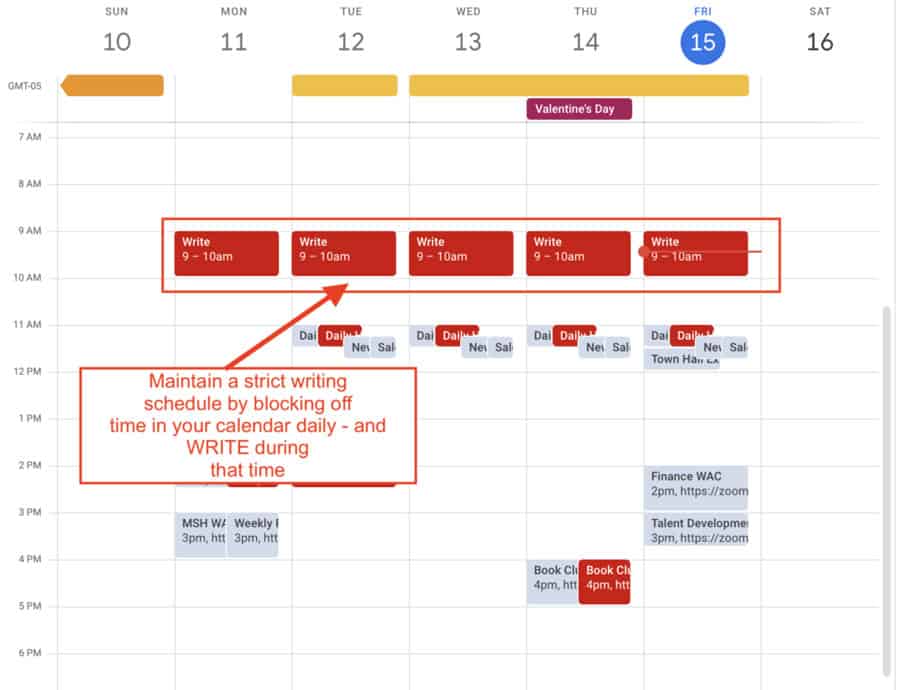
Look at Omer Redden, one of our authors. He was working full-time at one job and had another part-time job, raising three kids, and moving across states—busier than most people.
Despite all of this, he found the time to write his book, Give and Grow Rich: Change Your Mind, Change Your Money, and launched his book within three months.
Using our process, he’s gone on to write multiple books, and his wife and kids are publishing books now, too! If Omer could figure out how to write a book and make it happen, then writing your book is certainly an attainable dream.
Question: I’m trying to figure out how to start my story and write a book for a specific genre. Do you have genre-specific writing advice?
Answer: Thank your lucky stars! We have articles on how to write a book in every genre:
- How to write a novel
- How to write a memoir
- How to write a children’s book
- How to write a romance
- How to write a thriller
- How to write a cozy mystery
- How to write a fantasy novel
- How to write a western
- How to write a graphic memoir
- How to write a nonfiction book
- How to write a book about your life
- How to write an autobiography
- How to write a self-help book
- How to write a leadership book
- How to write a book about your faith
- How to write a poem
- How to write a short story
- How to write about pets
- How to write a children’s book series
- How to write a book series
Self-Editing
Question: I know how to write a book but I’m struggling with the self-editing process. Is there software that can help me quickly self-edit my book?
Answer: Free book writing software / Grammarly / ProWritingAid
Question: I’ve heard a lot about writing in your unique voice. What does that mean to have a writing voice?
Answer: Your writing voice is made up of everything that makes you, you! Your word choice, the point of view you write from, and more. This differs from an author’s writing tone. It also ties into writing styles, but styles are predefined. If you’re a fiction author, there are different points of view in writing to consider as well. In summary, all of these are different: voice, tone, style, and point of view.
Professional Editing
Question: How do I find an editor for my book?
Answer: There are thousands of editors in the marketplace available to help you with the different types of edits you might need. If you want to try finding one yourself, check out this article on how to hire an editor for your book. We also have a short list of editors we know, like, and trust, and keep that list up to date. When you sign up for one of our programs, we connect you to an editor.
Cover Design
Question: How do I find a cover designer for my book?
Answer: We have found and curated some of the best book cover designers. We also have in-house cover designers who do tremendous work. Your cover design is included as part of the package when you sign up.
Formatting
Question: How do I find a formatter for my book?
Answer: We have tips on how to prep your book manuscript format, as well as some of the most common mistakes to avoid in formatting. Of course, when you join as one of our authors, we don’t just help you through learning how to write a book, but also take care of that process for you as part of your publishing package.
Launch
Question: I want to have the biggest launch possible. How should I launch my book?
Answer: First off, re-read the section above on Step 9: Launch. Then, you need to learn how to get more book reviews, how to run book promotions, and how to run Amazon ads for books. We also have information on how to run BookBub ads, Facebook ads for authors, and even ideas on social media for authors.
If you’re a Fiction author, learn how to market fiction books and how to market a box set / series.
Other questions about writing a book
- How do I write my first chapter?
- How long does it take to write a book?
- Should I hire a ghostwriter?
- Once I finish with how to write a book, how much does it cost to publish a book?
- How long does it take to publish a book?
How to write a book quickly
For those type A, speed writers who want to know how to write a book in just a few weeks or months, this section is for you.
Follow these steps to learn how to write a book in record time:
- What’s the fastest way to write a book?
- The fastest way for how to write a book quickly is to have a clear outline, set daily writing goals, and stick to a consistent writing schedule.
- The fastest way for how to write a book quickly is to have a clear outline, set daily writing goals, and stick to a consistent writing schedule.
- How quickly can a book be written?
- It depends on your commitment and schedule. Some people can write a book in a month, while others may take several months.
- It depends on your commitment and schedule. Some people can write a book in a month, while others may take several months.
- Is it possible to write a book in 3 days?
- It’s extremely challenging, but possible if you have a solid plan and can dedicate long hours each day to writing.
- It’s extremely challenging, but possible if you have a solid plan and can dedicate long hours each day to writing.
- How many pages is 100,000 words?
- Approximately 400 pages, assuming an average of 250 words per page.
- Approximately 400 pages, assuming an average of 250 words per page.
- How long should a first book be?
- A first book should typically be between 60,000 to 80,000 words.
- A first book should typically be between 60,000 to 80,000 words.
- Is 200 pages too short for a novel?
- No, 200 pages is a common length for many novels, especially in genres like romance and young adult.
- No, 200 pages is a common length for many novels, especially in genres like romance and young adult.
- Is writing an hour a day enough?
- Yes, writing an hour a day can be enough if you maintain consistency and focus during that time.
Learning how to write a book quickly follows the same steps for how to write a book, just in a much shorter time frame.
Need help writing a book?
Now that you know what it takes to write a book, it’s time to get moving. As mentioned at the outset, we have programs to help you publish any book you’re working on. These programs are for nonfiction, fiction, memoirs, and children’s books. To learn more about how we can help you write your book and publish it, book a call with our team.


Book Outline Generator
Choose your Fiction or Nonfiction book type below to get your free chapter by chapter outline!
Book Outline Generator
Enter your details below and get your pre-formatted outline in your inbox and start writing today!
CONGRATULATIONS
Thanks for submitting! Check your email for your book outline template.
In the meantime, check out our Book Outline Challenge.

